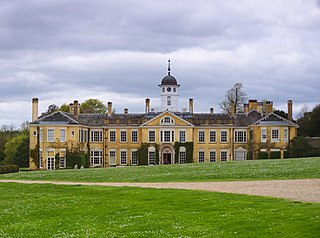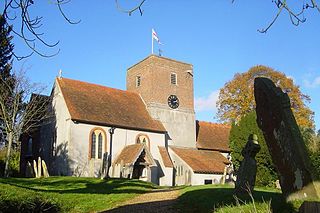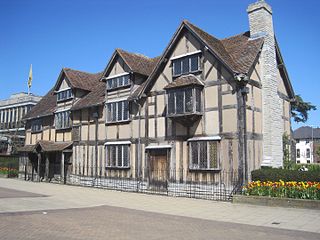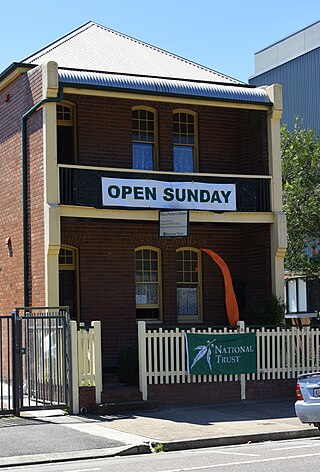History
The Edwardian semi-detached house built around 1905 and located on Blyth Grove in Worksop, was the residence of the Straw family and is now cared for by the National Trust. William Straw moved to the town in 1886 with his brother Benjamin and the two siblings established a successful grocers shop at 130 Bridge Street. The business, marketed as a tea dealer and seedsman as well as grocers, did well for itself, and on 15 September 1896, in Worksop Priory Church, William married Florence Ann Winks, daughter of the prosperous butcher and later councillor David Wall Winks, who owned the butchers across the street from the Straw's Grocery Shop. Having bought out his brother Benjamin in 1889, William was solely responsible for the business, living above the shop with Florence and their three sons, William (Jr) (1898), Walter (1899) and David (1901), who died at around eighteen months old in 1903.
It was not until 1923 that the family moved out to their new house on Blyth Grove and Florence quickly got to work on the decoration of her new home, choosing the latest wallpapers and carpets to create a fashionable and modern place for entertaining and relaxing. After living at the shop for so long the move to a separate family home was the chance to show off the success of the business. After the death of her husband in 1932 Florence made few alterations to the house, as a Victorian woman in mourning this would have been expected of her and her contemporaries would have found nothing strange about her choice to keep his pipes by the fire and his collar box in the bedroom. When she died in 1939 William and Walter lived in the house together, and their frugal way of living and make do and mend attitude resulted in the house largely avoiding modernisation.
William Jr had spent much of the 1920s and 1930s in London, initially studying English Literature at King's College London before going on to teach at City of London College. Moving home in 1939 he took over the running of the house, while his brother ran the family business until his retirement in 1962. Neither brother married but they both had a variety of hobbies and interests, including archaeology and walking, and were involved in various local societies and their chosen place of worship, St John's.
After Walter's death in 1976 William was alone until he died in 1990, the last few years of his life seeing him frequently in and out of hospital. When he died William generously left his collection of around 30,000 everyday objects to the National Trust, along with his money. The family home on Blyth Grove, and the other half of the semidetached property (which William had bought around 1940 and rented out) were left to the last set of tenants. Luckily the tenants sold to the National Trust, enabling the collection to stay in the house just as the Straws lived with it, providing a fascinating glimpse into a forgotten time.

Worksop is a market town in the Bassetlaw District in Nottinghamshire, England. It is located 15 miles (24 km) south of Doncaster, 15 miles (24 km) south-east of Sheffield and 24 miles (39 km) north of Nottingham. Located close to Nottinghamshire's borders with South Yorkshire and Derbyshire, it is on the River Ryton and not far from the northern edge of Sherwood Forest. Other nearby towns include Chesterfield, Gainsborough, Mansfield and Retford. The population of the town was recorded at 44,733 in the 2021 Census.

Woodside Park is a suburban residential area in London. It is located in the London Borough of Barnet, in the North Finchley postal district of N12.
Ballygar is a village in County Galway, Ireland. It is 19 km from Roscommon town.

Polesden Lacey is an Edwardian house and estate, located on the North Downs at Great Bookham, near Dorking, Surrey, England. It is owned and run by the National Trust and is one of the Trust's most popular properties.

Tring Park Mansion or Mansion House, Tring Park, is a large country house in Tring, Hertfordshire. The house, as "Tring Park", was used, and from 1872 owned, by members of the Rothschild family from 1838 to 1945.

Framsden is a village and civil parish located around 10 miles (16 km) north of Ipswich and 3 miles (5 km) south of the small market town of Debenham in the English county of Suffolk. The total population of Framsden in the census of 2001 was 299, with 125 households, 52 people under 16 years, 201 of working age and 46 over 65 years, increasing to a population of 357 in 137 households at the 2011 Census.

Upton Grey is a village and civil parish in Hampshire, England.

Dufferin Grove is a neighbourhood located in Toronto, Ontario, Canada, west of downtown. The neighbourhood is bordered by Bloor Street West to the north, Ossington Ave to the east, College Street to the south, and Dufferin Street to the west.
Thomas Quiney was the husband of William Shakespeare's daughter Judith Shakespeare, and a vintner and tobacconist in Stratford-upon-Avon. Quiney held several municipal offices in the corporation of Stratford-upon-Avon, the highest being chamberlain in 1621 and 1622, but was also fined for various minor offences.

Locust Grove is a National Historic Landmark estate located on US 9 in the Town of Poughkeepsie, New York. The 200-acre park-like estate includes homes, a carriage house, ice house, trails, a flower garden, and vegetable garden, and it overlooks the Hudson River from a bluff. The property includes a home designed by architect Alexander Jackson Davis for Samuel F. B. Morse, the inventor of the telegraph. An Italianate style mansion, it was completed in 1851.

Grangemuir House was the seat of a junior branch of the Douglas family in Scotland. The house and attached estate was bought by Walter Irvine, a Scot who owned sugar estates in Tobago and Luddington House in Surrey.

The Shakespeare Birthplace Trust (SBT) is an independent registered educational charity based in Stratford-upon-Avon, Warwickshire, England, that came into existence in 1847 following the purchase of William Shakespeare's birthplace for preservation as a national memorial. It can also lay claim to be the oldest conservation society in Britain. Receiving no government funding or public subsidies, it is totally dependent upon the public for support, and relies on donations and the income generated from visitors.

Shakespeare's Birthplace is a restored 16th-century half-timbered house situated on Henley Street, Stratford-upon-Avon, Warwickshire, England, where it is believed that William Shakespeare was born in 1564 and spent his childhood years. It is now a small museum open to the public and a popular visitor attraction, owned and managed by the Shakespeare Birthplace Trust.

Susannah Place is a heritage-listed former grocery store and workers' cottages and now historic house museum located at 58–64 Gloucester Street in the inner city Sydney suburb of The Rocks in the City of Sydney local government area of New South Wales, Australia. It was built during 1844. It is also known as Susannah Place Museum. The property is owned by Property NSW and managed by Sydney Living Museums, agencies of the Government of New South Wales. It was added to the New South Wales State Heritage Register on 10 December 1999.

The Bury is a building of historical significance in Hemel Hempstead in the county of Hertfordshire, England. It was erected in about 1790 by an attorney who worked in the town. It was the residence for the next two centuries of many notable people. It is now owned by the Dacorum Borough Council and is Grade II* listed.

Miss Porter's House is a heritage-listed former residence and now house museum at 434 King Street, Newcastle West, Newcastle, City of Newcastle, New South Wales, Australia. It was built by John T Owen. The property is owned by the National Trust of Australia (NSW). It was added to the New South Wales State Heritage Register on 17 November 2000.

Avery Terrace are heritage-listed terrace houses located at 2–4 Atherden Street in the inner city Sydney suburb of The Rocks in the City of Sydney local government area of New South Wales, Australia. It was designed in 1881, and it is also known as Former Ebsworth's Terraces and Ebsworth's. The property is owned by Property NSW, an agency of the Government of New South Wales. It was added to the New South Wales State Heritage Register on 10 May 2002.

95-99 George Street, The Rocks are heritage-listed shops and cafe and former dwellings located at 95-99 George Street in the inner city Sydney suburb of The Rocks in the City of Sydney local government area of New South Wales, Australia. It was built from 1868 to 1868. The property is owned by Property NSW, an agency of the Government of New South Wales. It was added to the New South Wales State Heritage Register on 10 May 2002.

103 George Street, The Rocks is a heritage-listed retail building and residence located 103 George Street in the inner city Sydney suburb of The Rocks in the City of Sydney local government area of New South Wales, Australia. It was built during 1856. It is also known as Joe Bananas (current) and Ariel Bookshop (former). The property is owned by Property NSW, an agency of the Government of New South Wales. It was added to the New South Wales State Heritage Register on 10 May 2002.

Scofton is a hamlet in the Bassetlaw district of northern Nottinghamshire, England. It is 130 miles (210 km) north west of London, 25 miles (40 km) north of the county town and city of Nottingham, and 3 miles (4.8 km) east of the nearest town Worksop. Having a shared modern history with nearby Osberton Hall, it is sometimes referred to as Scofton-with-Osberton. Other close neighbours are Bilby and Rayton which also have historical associations.



















